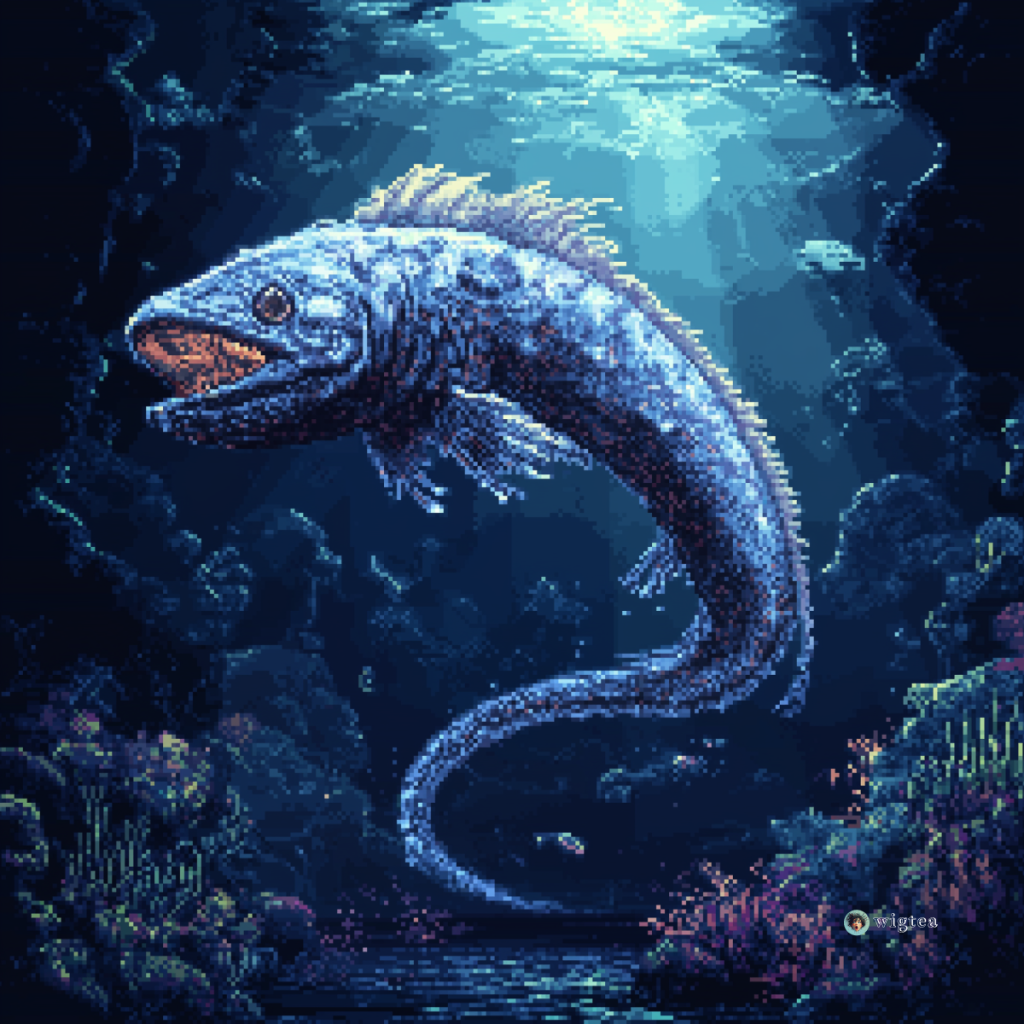
Picture: WigTea’s pixel art portrayal of a deep-sea oarfish, conceptualising its majestic presence in the mysterious depths of the ocean. This artistic representation highlights the creature’s serpentine form and eerie beauty, evoking the sense of awe and wonder that surrounds this rare species.
The mysterious deep sea oarfish
The deep sea oarfish, with its ribbon-like body and impressive length, has long been a subject of fascination and mystery. Known to inhabit the mesopelagic zone of the ocean, between 200 to 1,000 metres deep, these creatures are seldom seen by humans. When they do appear near the surface or wash ashore, they often provoke a mixture of awe and superstition.
Recent discovery in San Diego
On 11th August 2024, a 3.6-metre deep-sea oarfish was discovered floating near the surface in La Jolla Cove, San Diego. This rare event was witnessed by a group of snorkelers who promptly brought the fish to shore using a paddle board.
The discovery marked the 20th recorded instance of an oarfish washing ashore in California since records began in 1901. The unusual sighting drew immediate attention from the scientific community, with researchers from the Scripps Institution of Oceanography and NOAA Southwest Fisheries Science Center arriving on the scene to study the specimen.
This particular oarfish is now set to undergo a necropsy to determine its cause of death and to provide further insights into the mysterious lives of these deep-sea giants.
The world’s longest bony fish
Oarfish hold the title of the longest bony fish in the world, capable of growing up to 11 metres in length. Their elongated bodies and bright red dorsal fin give them a unique and somewhat eerie appearance. These features have contributed to their reputation as “doomsday fish” with some cultures linking their appearances to impending natural disasters, such as earthquakes.
Myths and legends; oarfish as harbingers of doom
The belief that oarfish can predict earthquakes is deeply rooted in folklore. This myth likely arises from their deep-sea habitat, where they are thought to be sensitive to seismic activities. However, scientific evidence to support this theory is lacking. Despite this, stories of oarfish sightings before significant earthquakes, such as those in Japan before the 2011 earthquake and tsunami, continue to fuel public fascination with these creatures.
Scientific interest and conservation
The recent oarfish discovery has reignited scientific interest in the species. The specimen found in San Diego is scheduled for a necropsy, which will help scientists determine its cause of death and potentially provide insights into the health of deep-sea ecosystems. Given the rarity of such encounters, each new specimen offers a valuable opportunity to learn more about these elusive creatures.
Oarfish in popular culture
Beyond the scientific community, oarfish have a significant presence in popular culture. Often referred to as “sea serpents,” their ghostly appearance and association with disaster have made them the subject of numerous myths and media portrayals. The term “doomsday fish,” though scientifically inaccurate, captures the public’s imagination and underscores the mysterious aura surrounding these deep-sea giants.
Final thoughts
The recent appearance of an oarfish in San Diego is a reminder of the vast, largely unexplored depths of the ocean. While much about these creatures remains unknown, each new discovery provides an opportunity to learn more about their biology and behaviour. Whether viewed as a portent of doom or a fascinating marine specimen, the oarfish continues to captivate those who encounter it. As scientists continue to study this rare species, our understanding of the deep sea and its inhabitants will undoubtedly grow, further illuminating the mysteries of our planet’s oceans.

Leave a Reply